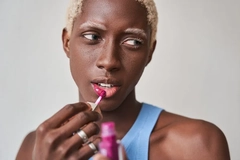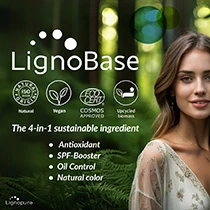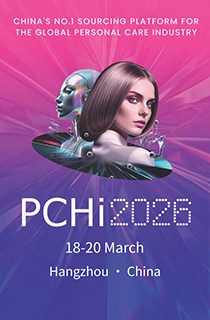Engineers develop animal-free model replicating wrinkles with anti-aging innovation applications

Researchers from Pohang University of Science and Technology (POSTECH), South Korea, make a “breakthrough” in understanding wrinkle formation by developing an in vitro model that mimics the structure of wrinkles in biological tissues.
The study in Nature Communications was led by Professors Dong Sung Kim and Anna Lee with contributions from Dr. Jaeseung Youn from the Department of Mechanical Engineering. They explored the role of extracellular matrix (ECM) dehydration and compressive forces in wrinkle formation.
The team compared the aging of the skin to the wrinkling of other organs, such as the gut and brain. Personal Care Insights talks to Kim about how the research can be a tool for studying skin aging, testing anti-aging treatments and advancing regenerative therapies.
Although “epithelial folding is commonly studied using in vivo animal models,” the new model allows real-time imaging without relying on animal models, paving the way for future discoveries in cosmetics, embryology and biomedical engineering.
What insights can your research provide regarding the aging process of skin compared to other organs with wrinkle patterns?
Kim: Compared to other organs, the skin exhibits a distinct transition in folding patterns with aging, progressing from shallow wrinkles to deep folds. Our model, which can replicate both the initial wrinkle formation and the transition to deep folds of epithelial tissue, holds significant potential for studying the physiology of skin aging. It can also serve as a valuable tool in the development and testing of anti-aging treatments, offering insights into the mechanical mechanisms behind skin aging and providing a platform for evaluating the effectiveness of anti-aging compounds in preventing or reversing these structural changes. Image of wrinkled epithelium on the ECM hydrogel layer in response to compression (Image credit: POSTECH).
Image of wrinkled epithelium on the ECM hydrogel layer in response to compression (Image credit: POSTECH).
How does the mechanical instability within the ECM contribute to the wrinkle formation observed in your in vitro model?
Kim: In our in vitro model, mechanical instability between the epithelium and ECM is crucial for wrinkle formation. When compression is applied to the epithelial bilayer, the ECM, acting as a poroelastic material, begins to dehydrate, and the stiffness mismatch between the epithelium and ECM governs the emergence of surface wrinkles. As compression increases, the ECM’s strain-stiffening properties facilitate surface buckling, which gradually evolves into deeper folds. The mechanical properties of both the epithelium and ECM — such as elasticity, porosity or water retention capacity — play a key role in regulating how wrinkles form under external forces.
What implications do your findings have for the development of anti-aging treatments and products?
Kim: Although our research was not specifically focused on investigating skin aging, several insights relevant to skin care products can be drawn from our model and observations. Our findings suggest that targeting the volume and elasticity of ECM with sufficient hydration could be key to developing more effective anti-aging treatments. Understanding how dehydration and the loss of ECM integrity contribute to wrinkle formation allows for the design of skin care products that restore the skin’s volume and mechanical strength. Furthermore, our in vitro model, which replicates the transition from wrinkling to deep folding, offers a powerful platform for testing the efficacy of anti-aging compounds in a controlled setting. This model provides valuable insights into how different ingredients interact with skin tissue at the cellular level, and most importantly, it allows for the direct visualization of their anti-wrinkling effects. Kim says targeting the volume and elasticity of ECM with hydration could be key to developing more effective anti-aging treatments.
Kim says targeting the volume and elasticity of ECM with hydration could be key to developing more effective anti-aging treatments.
Can you explain how dehydration and compressive forces interact to influence wrinkle formation in the ECM?
Kim: Dehydration and compressive forces interact in a critical way to influence wrinkle formation in the ECM. Wrinkle formation arises from the compressive strain experienced by both the epithelium and ECM, particularly due to the mismatch in their stiffness. Dehydration plays a key role in this process, as it allows the ECM to undergo compressive strain in response to external forces. Without dehydration, the ECM retains its original length and only experiences global buckling rather than forming localized wrinkles. Dehydration reduces the ECM’s volume, making it more susceptible to compression, which leads to wrinkling or eventual transition to deeper folds.
How might your platform for replicating wrinkle structures impact research in regenerative therapies or embryology?
Kim: Our platform for replicating wrinkle structures opens new avenues for research in both regenerative medicine and embryology. In regenerative therapies, understanding how tissue mechanics influence cell behavior can help in designing more effective skin grafts or artificial tissues that replicate the natural folding and wrinkling patterns of human tissue. This could lead to better integration and function of engineered tissues in the body. In embryology, the platform allows researchers to study the role of mechanical forces in tissue development, such as how organs like the intestine form through specific folding patterns. By replicating these developmental processes in vitro, we can gain insights into the fundamental biology of tissue formation and potentially identify strategies to repair or regenerate tissues that have lost their structural integrity due to injury or diseases.












